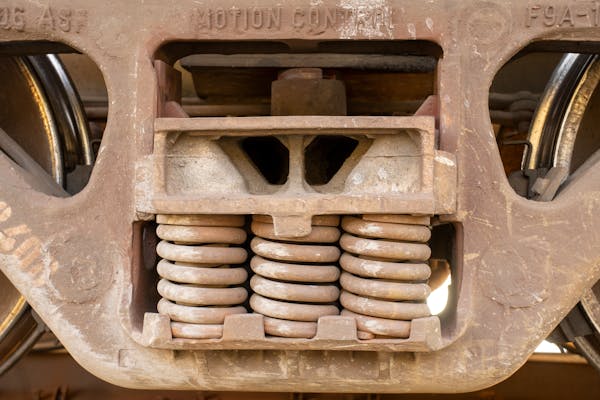
Suspension systems play a critical role in how vehicles handle, absorb shocks, and carry loads. One of the oldest yet still relevant suspension types in use today is the rigid axle suspension system. Despite the advancements in independent suspension technologies, the rigid axle (also known as a solid axle or beam axle) remains a preferred choice in certain applications—particularly in off-road vehicles, heavy-duty trucks, and utility vehicles.
This article explores the design, advantages, disadvantages, and use cases of the rigid axle suspension system to help you understand its importance in automotive engineering.
What is a Rigid Axle Suspension System?
A rigid axle suspension system consists of a single solid beam connecting the wheels on either side of the vehicle. When one wheel moves due to a bump or uneven terrain, the movement is transferred directly to the opposite wheel because both are connected rigidly.
There are two common types:
- Front Rigid Axle: Mostly found in older vehicles or off-road trucks.
- Rear Rigid Axle: Widely used in pickup trucks, SUVs, and commercial vehicles.
Key Components of a Rigid Axle Suspension:
- Axle Beam – The main solid component that links both wheels.
- Leaf Springs or Coil Springs – These absorb shock and support the vehicle’s weight.
- Shock Absorbers – Control rebound and dampen the motion of the springs.
- Control Arms or Trailing Arms – Used in more advanced setups for better handling.
Advantages of Rigid Axle Suspension
- Durability & Strength
The design is extremely robust and can handle heavy loads, which is why it’s popular in trucks and utility vehicles. - Simple Design
With fewer moving parts compared to independent systems, it’s easier to manufacture and maintain. - Cost-Effective
Both in production and repair, rigid axles are more affordable than complex independent systems. - Ideal for Off-Roading
Solid axles provide excellent ground clearance and articulation, making them preferred for off-road and rugged terrain. - Consistent Wheel Alignment
Since the wheels remain parallel, there’s less variation in camber, especially under load.
Disadvantages of Rigid Axle Suspension
- Rougher Ride Quality
When one wheel hits a bump, the movement affects both sides, resulting in a stiffer and less comfortable ride. - Lower Handling Precision
Independent systems allow each wheel to react individually, leading to better control and road grip. - Heavier Setup
Solid axles are typically heavier than modern multi-link independent systems, which can impact fuel efficiency. - Less Adaptability on Smooth Roads
On smooth highways, the rigid axle can feel outdated compared to smoother and more dynamic suspension systems.
Applications of Rigid Axle Suspension
Despite its drawbacks, the rigid axle is still widely used in specific vehicle categories:
- Pickup Trucks: Ford F-150, Toyota Hilux, Ram 1500
- Off-Road Vehicles: Jeep Wrangler, Suzuki Jimny, Land Rover Defender
- Commercial Trucks: Box trucks, delivery vans, and heavy-duty haulers
- Buses and Utility Vans: Offering high load capacity and ease of maintenance
These vehicles benefit from the axle’s ability to handle weight and uneven terrain reliably.
Why Off-Roaders Love the Rigid Axle
Off-roading requires vehicles to traverse rocky, muddy, and uneven surfaces. The rigid axle’s ability to distribute power evenly and its resistance to mechanical damage make it a favorite. When lifted or customized, solid axles offer more articulation and fewer weak points than many independent systems.
Jeep and Land Rover enthusiasts often choose vehicles with solid front and rear axles for extreme off-road builds due to this reliability.
Rigid Axle vs. Independent Suspension
| Feature | Rigid Axle Suspension | Independent Suspension |
| Ride Comfort | Stiffer | Smoother |
| Load Handling | Excellent | Moderate |
| Maintenance | Easier & Cheaper | Complex & Costly |
| Off-Road Capability | Superior | Moderate to Good |
| Weight | Heavier | Lighter |
Each system has its merits. Passenger cars favor independent suspensions for comfort, while work vehicles stick with rigid axles for toughness.
Is the Rigid Axle System Outdated?
Not at all. While the rigid axle design is old, it’s far from obsolete. Automotive engineers continue to evolve it with better materials, improved shocks, and hybrid setups. In fact, many new SUVs and trucks still rely on rigid axles because they meet the demands of performance, strength, and affordability.
Conclusion
The rigid axle suspension system is a classic example of engineering that stands the test of time. It may not offer the refined ride of modern independent suspensions, but when it comes to toughness, load-bearing, and off-road prowess, it still reigns supreme. Whether you’re an off-roading enthusiast, a truck owner, or someone curious about automotive tech, understanding how rigid axles work will give you a deeper appreciation for the vehicles built with them.




